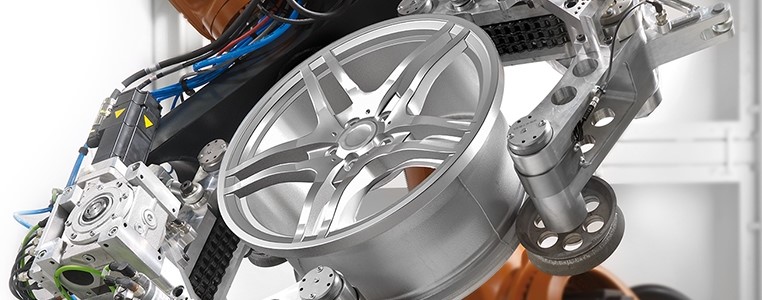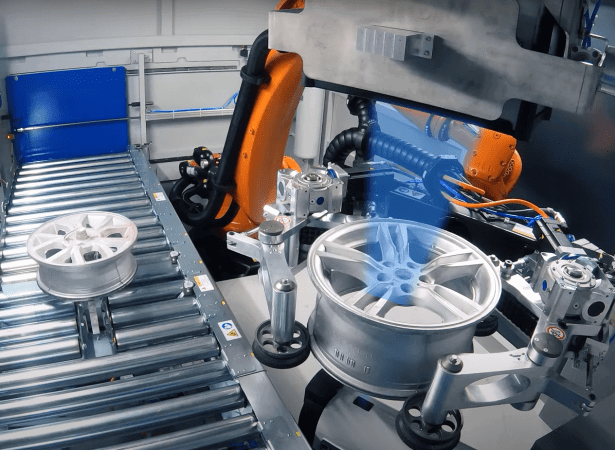

The HeiDetect Wheel Robot wheel inspection system, from the house of HEITEC PTS, attains an intensely high output due to its integrated industrial robot and is supreme for inline operation in the mass production of cast aluminium automotive wheels.

The several areas of cast aluminium wheels can be inspected through one testing position using the large X-ray detector, which drops the number of handling steps and reduces the test time for each wheel.
HeiDetect Wheel Robot delivers a fully automatic wheel test facility and, through the integration of the ISAR image evaluation software and the 400 mm x 200 mm XEye detector, developed by the Fraunhofer Institute for Integrated Circuits that permit almost pseudo-error-free evaluation with stable image quality. The methodical processing of images allows casting errors such as shrink holes, pores, cavities and foreign matter in the range of 3% of the radiographed wall thickness to be detected and classified. Large areas of oxide can also be detected from a size of 1% of the wall thickness.

The ISAR evaluation software comprises fully automatic evaluation of X-ray images with automatic defect recognition (ADR) allowing automated production monitoring. Defect detection algorithms are engaged to reliably detect standard defects, such as cavities and pores, as well as algorithms for special tasks (character recognition, low-contrast defects in wheels) with a focus on the seamless integration of testing into the production process. Creating a test program for a new type of wheel can be generated offline and synchronized to the production X-ray inspection system.
The ISAR evaluation software offers an adaptable, Windows-based, graphic user interface via which the test parameters can be set individually for OEM wheel variants and specifications. The distinctively prepared test results are transmitted to production in real-time enabling trend analysis and continuous product quality optimization aimed to minimize scrap.
Additional benefits are offered by the automatic wheel inspection system by incorporating barcodes, allowing the alignment of the wheels to be specified, and associated test results monitored. The system can inspect wheel sizes from 13” to 24” and spokes and hub can be captured with a single image.
The full enclosure and compact installation space allow incorporation into the production process, even in extreme production conditions. The wheel gripper is designed so that wheels with a faulty rim flange can also be tested. The Fraunhofer Institute detector exhibits an extremely low rate of degradation with a replacement which is not required for at least 10 years.
Responses








